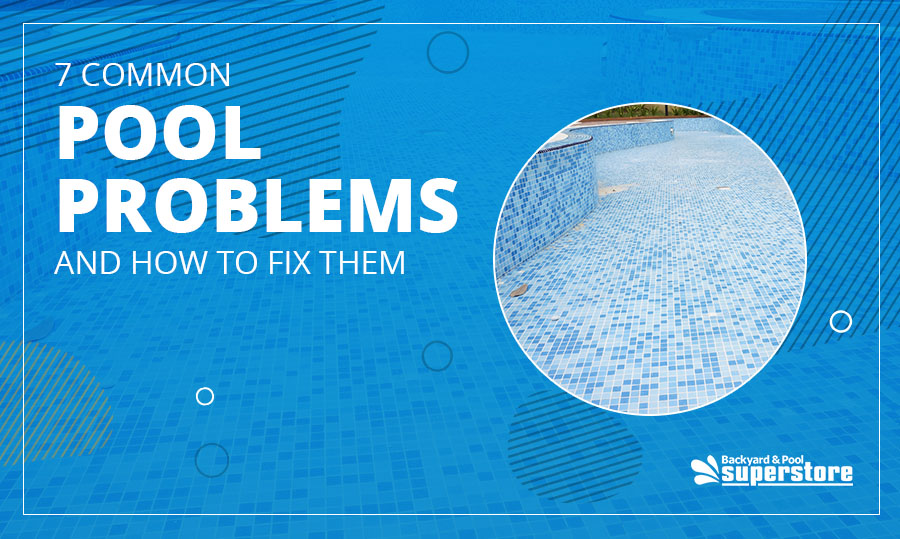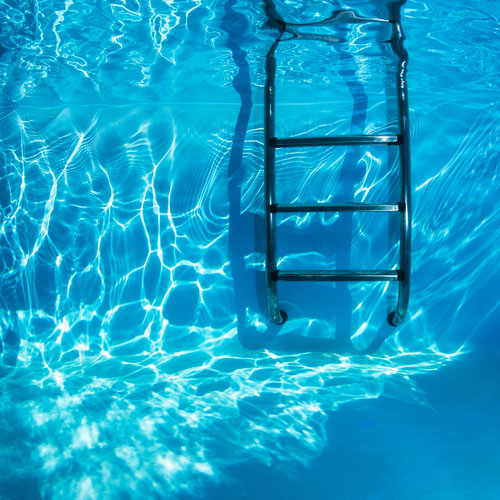
The first step of avoiding trouble with your pool starts with the installation. Do your research and make sure the company you choose to install your pool is reputable and has been around for a while. They won’t be in business long if their work is low quality. Ask to see pools they have installed. Talk to friends and neighbors who have pools and ask if they would recommend that company.
If you have decided on an above-ground pool, you may be considering tackling the installation yourself. Be realistic about your ability. Call on friends and family members who have the skills you may be lacking. Do as much research as possible before you start so that you know what you will be facing step by step. Talk to the company that you are purchasing your pool from. Make sure they have advisors available to assist you if you meet a stumbling block during the installation process.
If you are purchasing a home with an existing pool, do not finalize the purchase until you have had the pool inspected by a certified pool expert. You do not want to inherit someone else’s problem pool. The inspection should include all parts of the pool, including all the mechanicals, the deck, and the fencing.
The pool should meet all code requirements for safety fencing and gates. The electrical component of the pool should also be verified as up to code requirements. The filter and pump should be the correct size for the size of your pool, and all should be working. The inspection should include the condition of any tiling or cement finish, or the vinyl liner.
If you live in an area that will require that the pool be closed for part of the year (winter), check the safety cover for the pool and see if it is in good condition. Generally, these covers are included in the sale as they are made to fit your specific pool size and shape.

Is there a ladder or stairway included in the above ground pool? Remember, the previous owner does not have to include the equipment such as the vacuum and the brush for cleaning the sides of the pool or the skimmer net for cleaning debris that is floating on the water. You will need these items, as well as the pool water test kit and pool chemicals, as soon as you move into the house.
Pool maintenance must be kept up, and the longer your pool is left without care the more likely that problems will develop. Even if you are planning to use a pool service, you still will need some basic equipment. Contact the company you want to maintain your pool and discuss what they expect you to provide and what they suggest you have for maintenance between their scheduled visits. Arrange for their first visit to be as close to your move-in date as possible.
If you have followed the above suggestions when purchasing a home with an existing pool or when installing your new pool, you are off to a great start. You and your family will have years of use from your pool and make so many great memories. It doesn’t mean you will never face problems with your pool, but following a good maintenance schedule will minimize the number of issues and the severity of the problems.
Many of the problems pool owners have are the results of a breakdown in the pool cleaner components. Your pool cleaner includes the skimmer and vacuum, pool chemicals, and pool filter and pool pump.
Here are some of the most common problems pool owners may face over the life of their pool.
1. Green water
If you wake up one morning and the pool water is a lovely shade of green, you most likely have grown a great crop of algae in your pool. The most likely cause is that you skipped testing the water and your pool’s chlorine level has dropped below what is needed to prevent algae growth.

Luckily, this is an easily fixed problem. Test your pool water to confirm the cause. Your pool will need to be shocked to kill the algae, and then you will have to brush the walls and all surfaces of the pool to remove the dead algae and vacuum it all to return your pool to normal. The pool will not be usable until you finish the process. Trust us. You will never skip testing the water again.
2. Cloudy water
In this case, you go to use your pool and, instead of crystal-clear water, it looks like there is a cloud of fog in your pool. The most likely cause is bacteria build-up in your pool. Again, as with algae, the likely cause is skipped testing that would have told you that the pool is low on chlorine, which kills the bacteria. Test your pool water and add chemicals as indicated.
3. Dirty filter.
Your pool filter needs checking on a regular schedule. The filter can become ineffective if it is dirty. If your filter seems to be functioning but you have the problem of green or cloudy water, check your filter after you have tested the water. The filter will get dirty faster if there is heavy pool use or for environmental issues.
The filter will need cleaning more frequently if there is heavy pollen, or there are tree blossoms falling into the pool. If there is a lot of wind, it can blow more dust and dirt into the pool. All these factors can affect the efficiency of your pool filter.

Clean your pool filter according to the instructions for your particular type of pool filter. There are also products available to help degrease your filter. The filter can become coated with body oil and sunscreen product. The filter cleaner will remove most of these substances from your filter. A clean filter will be more efficient and will use less energy, and keeping the filter clean can extend its life.
4. Low or high pH
The safe pH level for swimming pool water is 7.2-7.6. A pH above or below this range will cause irritation to the skin, throat, and eyes of the people using your pool. The pH level is determined when you test the pool, and you can balance the pH as needed with pool chemicals. Hopefully, you are beginning to appreciate the importance of frequent testing. The last thing you want to happen at your pool party is for all the guests to leave the pool complaining about redness and burning of their skin and eyes.
5. Leaking vinyl liner
You notice the water level in your pool has gone down more than the ¼ to ½ inch that could be caused by evaporation. This is a problem that needs immediate attention. The first step is to determine where the leak is. Check the piping and the pool equipment for a leak first. If all connections are tight and the equipment seems intact, it is time to check the liner.
If the water level has stabilized, the leak is probably somewhere at the current water level. If the pool is continuing to leak, you will have to look deeper and even check the floor for a hole, worn area, or tear. Once you find the leak, you can temporarily repair it with duct tape. Duct tape will adhere even underwater, but it will not hold indefinitely. The edges will start to loosen, and duct tape is not UV resistant.
You will need to decide if your liner needs to be replaced. If it is ten years old and has developed a worn area, it will be difficult to patch, and the repair will probably not last. If your liner is only two or three years old and in great shape except where the cut has occurred, a patch is worth a try. The patches can last for many years with no problem. A lot will depend on the location of the tear and how much stress is placed on the liner.
6. Pool liner coming out of track.
The pool liner pulling out of the track is a common problem as the liner ages. The older liner will become stiffer and less stretchy, and it will shrink with age.

The typical spot for the liner to pull away is the corner. To attempt to fix this, you will need to boil a large amount of water. Pour the boiling water directly on the area of the vinyl that has pulled away. The hot water will allow you to stretch the vinyl enough to get it back in the coping. The boiling water will make the vinyl too hot to touch for only a few seconds. Once you can handle it, you have to work fast to get the vinyl back in place before it cools enough to be unworkable.
Keep reapplying the boiling water until you have the entire area back in the coping. If you leave any part unattached, the vinyl will immediately start to pull away again, starting at that spot. Even with the boiling water, reattaching the liner will require significant hand strength and coordination and speed. It can help to have more than one person when attempting this on your own.
If the area that has pulled away is large, you will need to call the professionals, and you may need to empty the pool. If your pool is 7-8 years old, even boiling water may not cause the liner to stretch enough to get the liner back in the track. You may have to replace the liner.
7. Worn O-ring.
The pool pump O-ring and filter O-ring need to be checked periodically for wear. The O-ring that wears the most and which may need replacing is the large O-ring located between the filter head and filter body. This should be checked every time you clean the filter. Look for any signs of wear, cracks, rips or tears.
A defective O-ring will allow water to leak from the filter and can cause expensive damage to the pool equipment. Purchase the replacement O-ring and apply a silicone-based lubricant to the O-ring before installation to extend its life.
The key to minimizing problems and costly repairs to your pool and equipment is keeping up with pool maintenance. Spending a few minutes each day to test the water, and a few additional minutes to add chemicals if necessary, will prevent hours of cleaning later.
Be aware of conditions that can influence the health of your pool, such as pollution from debris, heavy pool use, and weather conditions. Don’t be afraid to ask for help from the professionals. If something doesn’t seem right, don’t ignore it. Be proactive and don’t let small problems develop into large and potentially expensive repairs.
 Hello Guest,
Hello Guest,  0 item(s)
0 item(s)
